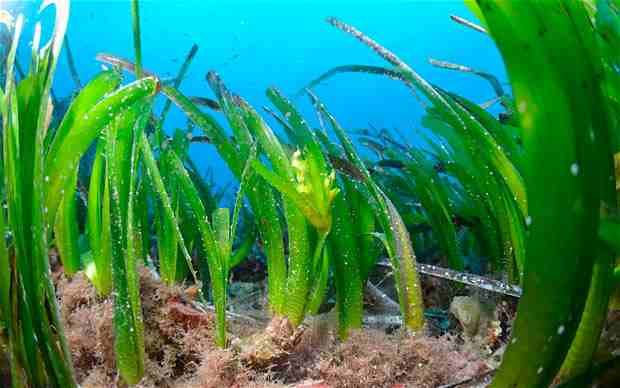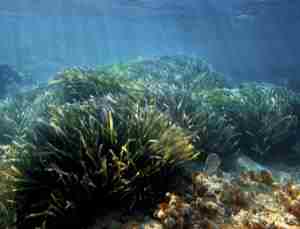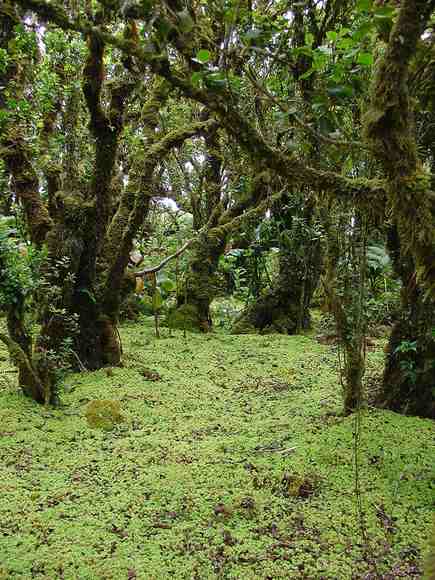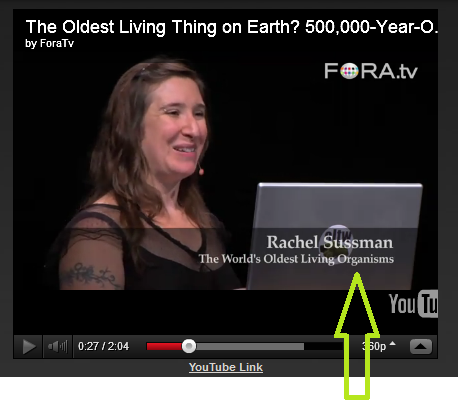It looks like you're using an Ad Blocker.
Please white-list or disable AboveTopSecret.com in your ad-blocking tool.
Thank you.
Some features of ATS will be disabled while you continue to use an ad-blocker.
share:
Amazing.....I love discoveries such as this. It just proves how little we really know about the world around us.
www.telegraph.co.uk...

www.upi.com...
truthdive.com...
www.newscientist.com...

I dare to guess that one day we will discover things at the bottom of our oceans that will be far older than this, but this is still an amazing discovery.
www.telegraph.co.uk...
Ancient patches of a giant seagrass in the Mediterranean Sea are now considered the oldest living organism on Earth after scientists dated them as up to 200,000 years old

Australian scientists sequenced the DNA of samples of the giant seagrass, Posidonia oceanic, from 40 underwater meadows in an area spanning more than 2,000 miles, from Spain to Cyprus.
The analysis, published in the journal PLos ONE, found the seagrass was between 12,000 and 200,000 years old and was most likely to be at least 100,000 years old. This is far older than the current known oldest species, a Tasmanian plant that is believed to be 43,000 years old.
Prof Carlos Duarte, from the University of Western Australia, said the seagrass has been able to reach such old age because it can reproduce asexually and generate clones of itself. Organisms that can only reproduce sexually are inevitably lost at each generation, he added
The separate patches of seagrass in the Mediterranean span almost 10 miles and weigh more than 6,000 tons.
www.upi.com...
truthdive.com...
www.newscientist.com...

I dare to guess that one day we will discover things at the bottom of our oceans that will be far older than this, but this is still an amazing discovery.
edit on 7-2-2012 by isyeye because: (no reason given)
*gasp*
But surely, this can't be so!
The world is only 6,000 years old, don't you know? This is obviously just a trick by Satan to confuse us!
But surely, this can't be so!
The world is only 6,000 years old, don't you know? This is obviously just a trick by Satan to confuse us!
reply to post by isyeye
Most yeasts reproduce asexually, in a process called budding.
Wouldn't that make them a candidate for oldest living thing? I think yeasts predate seagrass on the evolutionary timeline, don't they?
Wouldn't that make them a candidate for oldest living thing? I think yeasts predate seagrass on the evolutionary timeline, don't they?
reply to post by butcherguy
That's a good question. If yeast does predate the seagrass, you might be correct. I guess it may depend on the definition of "life".
That started making me think about bacteria, and I did a search and found this:
That's a good question. If yeast does predate the seagrass, you might be correct. I guess it may depend on the definition of "life".
That started making me think about bacteria, and I did a search and found this:
edit on 7-2-2012 by isyeye because: (no reason given)
reply to post by Ophiuchus 13
Once again.....you may very well be correct. There's no telling what they may discover at Vostok.
That's why I love discoveries like this.....It gets everyone thinking.
You all made me go back and add a question mark to the end of the thread title.
I think the topic is open for interpretation.
Once again.....you may very well be correct. There's no telling what they may discover at Vostok.
That's why I love discoveries like this.....It gets everyone thinking.
You all made me go back and add a question mark to the end of the thread title.
I think the topic is open for interpretation.
edit on 7-2-2012 by isyeye because: (no reason given)
reply to post by isyeye
That's even more impressive (the Siberian bacteria), IMO.
A real survival story!
A real survival story!
edit on 7-2-2012 by butcherguy because: (no reason given)
reply to post by isyeye
I, for one, would like to welcome our Ancient Mediterranean giant seagrass overlords.
Amazing how we keep discovering things.
Maybe one day we'll discover how to fix stupidity.
But I won't hold my breath.
I, for one, would like to welcome our Ancient Mediterranean giant seagrass overlords.
Amazing how we keep discovering things.
Maybe one day we'll discover how to fix stupidity.
But I won't hold my breath.
Originally posted by trollz
*gasp*
But surely, this can't be so!
The world is only 6,000 years old, don't you know? This is obviously just a trick by Satan to confuse us!
like dino bones... it's a test of our faith ... HAHA
awesome find op!
reply to post by isyeye
hmmm. fascinating, and awesomely interesting.
What about the immortal worms? Planaria.
You can chop their heads off and they'll grow a whole new head and brain!
Secrets of the immortal worm
Thing with regrowing head and brain would totally suck if zombies got hold of that technology and could backwards engineer the head regrowing. *worried now*
hmmm. fascinating, and awesomely interesting.
What about the immortal worms? Planaria.
You can chop their heads off and they'll grow a whole new head and brain!
Secrets of the immortal worm
Thing with regrowing head and brain would totally suck if zombies got hold of that technology and could backwards engineer the head regrowing. *worried now*
edit on 7-2-2012 by nineix because: (no reason given)
if it reproduces A sexually, then its not the oldest living thing!
for example in humans:
F + M = (well lets say 1) 1
most likely then F and M die and 1 = m or f.
the generation DIES. follow?
in asexual reproduction:
A=AAAAAA
A dies. and AAA are alive.
scientists can be so dumb am i right?
the only reason this would be right is if A= still alive for 200,000 years. follow?
and how do they measure whats been alive that long? the individual blades of grass could be alive separately?
in a human body, the cells replace every once in a while at different rates.
EDIT: what my point is, is.... that... Is the big grass thing a bunch of cells working together to form a tissue as an organ or animal ( a big mass of living stuff that is basically one )
or is it a bunch of grass and roots all tangled together but not seriously connected?
for example in humans:
F + M = (well lets say 1) 1
most likely then F and M die and 1 = m or f.
the generation DIES. follow?
in asexual reproduction:
A=AAAAAA
A dies. and AAA are alive.
scientists can be so dumb am i right?
the only reason this would be right is if A= still alive for 200,000 years. follow?
and how do they measure whats been alive that long? the individual blades of grass could be alive separately?
in a human body, the cells replace every once in a while at different rates.
EDIT: what my point is, is.... that... Is the big grass thing a bunch of cells working together to form a tissue as an organ or animal ( a big mass of living stuff that is basically one )
or is it a bunch of grass and roots all tangled together but not seriously connected?
edit on 7-2-2012 by SoymilkAlaska because: BECAUSE YES
reply to post by trollz
I don't think it's possible for you to be any more confused and lost then you already are. Stop trying to derail a excellent thread with your God bashing. Take your hate to a anti God site you'll be alot more at home there!!
On topic:
If they just found that out I wonder what they will discover as they explore more and more of the oceans sea floor? Great post!
I don't think it's possible for you to be any more confused and lost then you already are. Stop trying to derail a excellent thread with your God bashing. Take your hate to a anti God site you'll be alot more at home there!!
On topic:
If they just found that out I wonder what they will discover as they explore more and more of the oceans sea floor? Great post!
This is another recent discovery about moss in Hawaii being around 50,000 years old.
It also reproduces thru cloning.
news.nationalgeographic.com...

It also reproduces thru cloning.
news.nationalgeographic.com...
A moss spreading throughout the Hawaiian Islands (map) appears to be an ancient clone that has copied itself for some 50,000 years—and may be one of the oldest multicellular organisms on Earth, a new study suggests.

The peat moss Sphagnum palustre is found throughout the Northern Hemisphere, but the moss living in Hawaii appears to reproduce only through cloning, without the need for sex or production of spores.
All the moss populations sampled share a rare genetic marker, which suggests they're descended from a single founder plant that was carried via wind to Hawaii tens of thousands of years ago.
edit on 7-2-2012 by isyeye because: (no reason given)
reply to post by isyeye
perhaps you should [or rather the source author] say they may be the oldest Multi-cellular organism to date
[see above posts]
interesting coincidence is it's named after both a god [Poseidon] and a titan [Oceanus]
S&F
perhaps you should [or rather the source author] say they may be the oldest Multi-cellular organism to date
[see above posts]
interesting coincidence is it's named after both a god [Poseidon] and a titan [Oceanus]
S&F
Originally posted by Ophiuchus 13
That is until they breach Vostok!
LOL! When reading the OP that was my thought as well It's already been breached by the way:
www.cbsnews.com...
The lake has been buried under ice for 14 million years, should they find anything at all alive in those waters then it's going to have to be a strong candidate for "oldest living thing on earth"
reply to post by DerepentLEstranger
I think I agree with you. I don't think the source article was entirely acurate when stating that the seagrass is the oldest living thing known. I think it's debatable whether asexual reproduction or cloning counts here or not. It needs to be remembered too that plants, and single celled organisms aren't the only living things that reproduce asexually.
en.wikipedia.org...
I think I agree with you. I don't think the source article was entirely acurate when stating that the seagrass is the oldest living thing known. I think it's debatable whether asexual reproduction or cloning counts here or not. It needs to be remembered too that plants, and single celled organisms aren't the only living things that reproduce asexually.
en.wikipedia.org...
The Mourning Gecko or Common Smooth-Scaled Gecko (Lepidodactylus lugubris) is a species of gecko. This small (10.5 cm total length), nocturnal gecko feeds on small insects and flower nectar. This species is notable because it is parthenogenic, and there are no remaining males that have been found. Females engage in pseudocopulation, stimulating both to produce viable eggs. These eggs are adhered to surfaces in protected locations. Most clutches consist of two eggs, and clutches are laid two to three weeks apart.
edit on 7-2-2012 by isyeye because: (no reason given)
Originally posted by dthwraith
reply to post by trollz
I don't think it's possible for you to be any more confused and lost then you already are. Stop trying to derail a excellent thread with your God bashing. Take your hate to a anti God site you'll be alot more at home there!!
Well, as a matter of fact, that was not "God bashing" at all. I believe in spiritual beings, so I'm sure some kind of "God" does exist. I was making fun of the people who believe the Earth is only 6,000 years old; hence it would be more appropriate to say "people bashing" rather than "God bashing", although even so, I expressed no feelings of hate or anger. It was also not off-topic, since it had to do directly with the varying beliefs about the age of the Earth and the things on it. I'm of the group that believes the original post, rather than denies the possibility of it due to misguided religious beliefs (that the Earth is only 6,000 years old). Again, I feel the need to point out that this in no way is against any particular religion (or God), but rather, certain people.

edit on 7-2-2012 by trollz because: (no reason given)
reply to post by isyeye
Wrong, the oldest life form on earth is the Great Barrier Reef which is well over 500,000 thousand years old.
Wrong, the oldest life form on earth is the Great Barrier Reef which is well over 500,000 thousand years old.
reply to post by Jace26
I was thinking the same thing about the Great Barrier reef a little while ago too, but then I thought of something even older.....blue-green algae.
astrobio.net...
But again, I think determining the oldest living thing on earth is subjective, depending on if you count things that reproduce asexually.
I was thinking the same thing about the Great Barrier reef a little while ago too, but then I thought of something even older.....blue-green algae.
astrobio.net...
Cyanobacteria are aquatic and photosynthetic, that is, they live in the water, and can manufacture their own food. Because they are bacteria, they are quite small and usually unicellular, though they often grow in colonies large enough to see. They have the distinction of being the oldest known fossils, more than 3.5 billion years old, in fact! It may surprise you then to know that the cyanobacteria are still around; they are one of the largest and most important groups of bacteria on earth.
Cyanobacteria or blue-green algae became the first microbes to produce oxygen by photosynthesis, perhaps as long ago as 3.5 billion years ago and certainly by 2.7 billion years ago. But, mysteriously, there was a long lag time - hundreds of millions of years - before Earth's atmosphere first gained significant amounts oxygen, some 2.4 billion to 2.3 billion years ago.
But again, I think determining the oldest living thing on earth is subjective, depending on if you count things that reproduce asexually.
edit on 7-2-2012 by isyeye because: (no reason given)
Your all wrong, according to fora.tv Rach Sussman is the oldest living organism


new topics
-
Paradox of Progress
Ancient & Lost Civilizations: 4 hours ago -
Joe Biden gives the USA's Highest Civilian Honor Award to Hillary Clinton and George Soros.
US Political Madness: 6 hours ago -
Winter Storm
Fragile Earth: 7 hours ago -
Biden Face Planted Somewhere
Politicians & People: 9 hours ago -
A great artist and storyteller, for kids of all ages
General Entertainment: 9 hours ago
top topics
-
Joe Biden gives the USA's Highest Civilian Honor Award to Hillary Clinton and George Soros.
US Political Madness: 6 hours ago, 13 flags -
What Is 'Quad Demic'? Mask Mandate Returns In These US States
Diseases and Pandemics: 13 hours ago, 11 flags -
Volcano Watch 2025
Fragile Earth: 15 hours ago, 8 flags -
The Future of fashion .
Social Issues and Civil Unrest: 14 hours ago, 8 flags -
Winter Storm
Fragile Earth: 7 hours ago, 7 flags -
Bin Cyber Junk…
Short Stories: 14 hours ago, 6 flags -
Biden Face Planted Somewhere
Politicians & People: 9 hours ago, 5 flags -
A great artist and storyteller, for kids of all ages
General Entertainment: 9 hours ago, 5 flags -
Paradox of Progress
Ancient & Lost Civilizations: 4 hours ago, 5 flags -
The Undertones - Teenage Kicks
Music: 15 hours ago, 3 flags
active topics
-
Post A Funny (T&C Friendly) Pic Part IV: The LOL awakens!
General Chit Chat • 7988 • : KrustyKrab -
Winter Storm
Fragile Earth • 18 • : RickyD -
What Is 'Quad Demic'? Mask Mandate Returns In These US States
Diseases and Pandemics • 29 • : TheRickestRick -
Paradox of Progress
Ancient & Lost Civilizations • 3 • : BingoMcGoof -
Here we again... CHINA having mass outbreak of something
Diseases and Pandemics • 24 • : NoCorruptionAllowed -
A great artist and storyteller, for kids of all ages
General Entertainment • 1 • : angelchemuel -
-@TH3WH17ERABB17- -Q- ---TIME TO SHOW THE WORLD--- -Part- --44--
Dissecting Disinformation • 3931 • : RelSciHistItSufi -
Joe Biden gives the USA's Highest Civilian Honor Award to Hillary Clinton and George Soros.
US Political Madness • 29 • : caterpillage -
NJ Drones tied to Tesla explosion at Trump Las vegas
General Conspiracies • 45 • : glen200376 -
New Jersey-Teachers Can Now Be Certified Without Passing Basic Reading Writing Math Testing
Education and Media • 14 • : boatguy12
